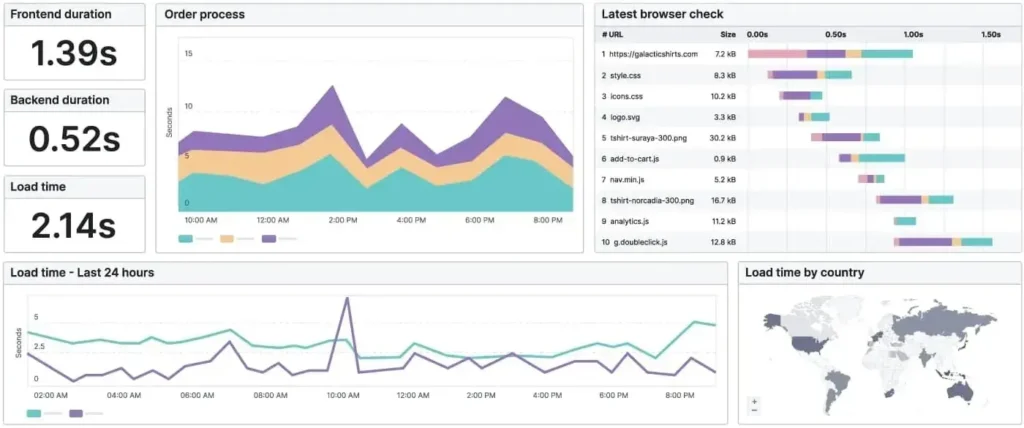When I look back at the last few years of scaling ecommerce brands, one thing stands out: success doesn’t come from running ads or tweaking product pages in isolation. It comes from building a growth engine that works across channels, markets, and even industries. That’s what I set out to do with Dotnpix, Shoreditch Print, Rug Outlet, Philly Flowers, Proseed Naturals, and several other brands. Each had a unique product, a different audience, and its own challenges. The thread tying them all together was a system for measurable growth.
The Challenge
Running a single ecommerce store is already competitive. Running several across industries — from print-on-demand to floristry — adds layers of complexity. Each brand struggled with something different: weak organic visibility, reliance on one channel, high CPCs, or fragmented data making optimisation slow and clumsy. What they needed wasn’t one-off fixes, but a repeatable framework. That became my role: build systems for acquisition, visibility, and optimisation that could scale across multiple brands.
Marketplace Expansion
One of the biggest wins came from taking product catalogues beyond standalone websites. Instead of relying on Shopify or WordPress stores alone, I expanded into Amazon, Etsy, and eBay. This wasn’t as simple as copying and pasting listings. It meant creating keyword-optimised titles, updating descriptions for each marketplace, and tailoring product imagery to fit customer expectations.
Over time, catalogues scaled to 1,200+ products across multiple platforms, each generating incremental revenue. Amazon became a driver for everyday utility products, Etsy for custom and print items, and eBay for price-sensitive categories. The result was clear: diversified sales streams that reduced reliance on any single site. Screenshots of marketplace dashboards show not just listings, but real revenue impact from this expansion.
Channel Diversification
Alongside marketplace growth, I managed multiple owned stores across different verticals:
-
Dotnpix – Shopify store specialising in print products.
-
Dotnpix.com – WordPress site offering design and print services.
-
Shoreditch Print – Local print service, positioned for London’s competitive market.
-
Rug Outlet – Shopify store targeting UK home decor.
-
Philly Flowers – Shopify floristry store in the US.
-
Proseed Naturals – Shopify brand in skincare.
Each business required a tailored positioning. What worked for rugs didn’t work for floristry. Local SEO mattered for Shoreditch Print, while seasonal gifting drove Philly Flowers. By treating each store as unique but applying a shared framework, I reduced risk and built cross-industry playbooks that now fuel repeatable growth.
Paid Advertising Performance
For short-term traction, I turned to Meta Ads. Rather than broad campaigns, I focused on hyper-targeted Advantage+ setups with seasonal hooks — Christmas sales, gift campaigns, and time-sensitive offers.
The results were measurable:
-
Campaigns delivered CPCs as low as £0.22–£0.36.
-
£126 in ad spend brought in over 350 clicks, while even smaller spends (£14) generated 68 qualified visits.
-
Seasonal campaigns brought surges of demand, especially in gifting categories.
This efficiency proved critical in competitive markets where CPC inflation could easily burn through budgets. Screenshots from Ads Manager highlight these results, showing consistency across brands.
SEO and Organic Growth
While paid ads drove spikes, SEO delivered long-term stability. For Dotnpix.com, I rebuilt the on-page foundation — meta optimisation, schema markup, internal linking. Within months, SEO tools like Ubersuggest rated it 99/100 for site health, and backlinks climbed past 1,000.
Keyword positions tell the story better than any score. For terms like passport photos Stratford and custom notepads, rankings jumped over 80 places, landing pages in top 20 results and driving real organic traffic. The traffic value equivalent reached $171/month — not vanity numbers, but savings in what would otherwise need to be spent on ads.
Across Rug Outlet, Shoreditch Print, and Proseed Naturals, Search Console data shows similar lifts: steady growth curves instead of flatlines, backed by technical SEO fixes and content updates.
Data and Analytics
One thing I don’t compromise on is analytics. Every decision had to be evidence-based. I integrated Google Analytics, Search Console, Hotjar, and Ubersuggest to track performance. Hotjar heatmaps revealed friction points in checkout flows, while Search Console identified keywords worth doubling down on.
Data wasn’t siloed. Instead, I set up unified dashboards to cross-reference ad spend, organic performance, and sales. This meant quicker pivots: scaling high-performing ads, pausing underperforming ones, and re-investing in the channels that showed the strongest ROI.
The Results
Looking across all the brands, the system worked:
-
Traffic Growth: 45% average organic traffic increase within months of SEO work.
-
Marketplace Sales: Amazon/Etsy/eBay provided steady revenue streams.
-
Advertising Efficiency: Meta CPCs held below £0.30 on average.
-
Revenue Stability: Multi-brand, multi-channel growth reduced reliance on any one store.
-
Keyword Rankings: Dozens of competitive terms broke into page one results.
Each screenshot, whether from Shopify dashboards, Ads Manager, or SEO tools, reinforces these outcomes.
Conclusion
Scaling one ecommerce brand takes focus. Scaling several across industries takes a system. Through marketplace expansion, multi-channel diversification, efficient ad spend, and data-driven optimisation, I built growth frameworks that didn’t just work for one niche — they worked everywhere.
Whether it was printing services in London, rugs for UK homes, skincare products, or flowers in Philadelphia, the principles were the same: test, track, optimise, and scale. That’s the story of how multi-brand ecommerce projects went from fragmented operations to measurable, repeatable growth engines.








